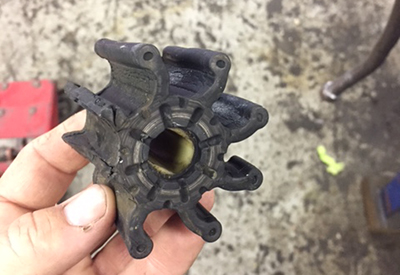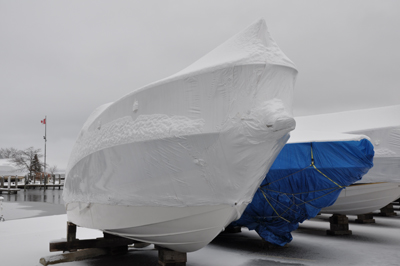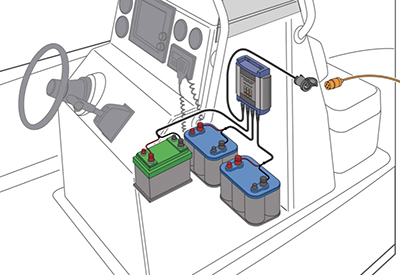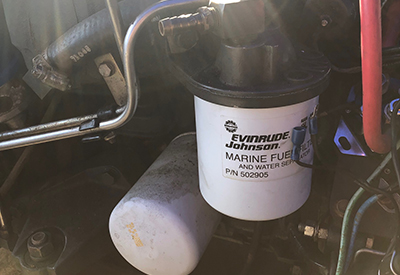Ask Andrew: Trimming – it’s just plane sense. Part 1
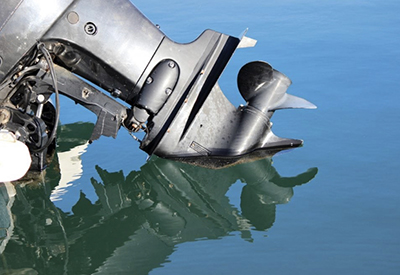
Aug 10, 2022
an outboard engine trimmed in the ‘up’ position
Unlike a car that moves (and requires control) left and right (and perhaps, if you’re an adventurous type, up and down steep grades), and boat has significantly more range of motion.
Port. Starboard. Yaw. Roll. Pitch. The operator controls the boat has best he/she can, through seas that are constantly moving and changing.
The nature of the marine engine, again, unlike a car, also comes into play; typically, with an aft-mounted prop and rudder, the boat is pushed forward from the stern. Likewise, the steering radius is towards the aft end of the boat.
As boaters, we’re stating the obvious: the boat is always being knocked around by wind, wave, wake and the water’s natural motion. The forces used to push the boat, and to stay on course are located aft. In a practical sense, this means that as the boat moves from a slow speed to a higher speed, the bow lifts into the air. This is neither comfortable nor safe (it’s tough to see what’s ahead if the bow has lifted too high). To combat this, there are several tools to ‘trim’ the boat:
 the trim button found on a throttle control
the trim button found on a throttle control
1) Trim-up and Trim-down on an outboard – Typically located on the thumb position of the throttle controls, the up/down switch allows the outboard engine to be tilted up and down.
2) Trim-up and Trim-down on a stern drive – located on the throttle controls or at the helm station, the up/down switch allows the stern-drive unit to be tilted up and down. (This is sometimes accompanied by a ‘trailer’ button, which allows the drive to be raised higher than the water line, for the purpose of loading safely on a trailer, but that is not really “trimming” in the sense I mean.
3) Trim Tabs – flat rectangular devices, mounted on the lower end of the transom, and controlled by electric or hydraulic rams. These tabs deflect the water coming off the trailing edge of the hull.
We can use these tools several ways: Trimming the outboard or the stern drive unit up or down can change the bow angle. Starting from an idle position, speed is increased and the bow lifts into the air. In order to get through the uncomfortable (and unsafe) position, the outboard or stern drive can be trimmed down to its lowest position, which changes the angle that the boat is pushed into the water, in turn lowering the bow. Once the bow angle reduces toward the water, the boat will rise on the surface of the water and reach ‘plane’ – which is the most desirable position for comfort, speed, and fuel economy.
On an outboard, the hydraulic reservoir and ram are mounted on the engine mounting bracket, and are an integral part of the engine. A helm switch is electrically controlled and tells the reservoir to push hydraulic fluid to raise the engine up or down. Diagnosing trim issues involve looking at the electrical and hydraulic portions, and common faults include: a failed trim switch, damaged/disconnected wiring, hydraulic oil leaks, or seized components.
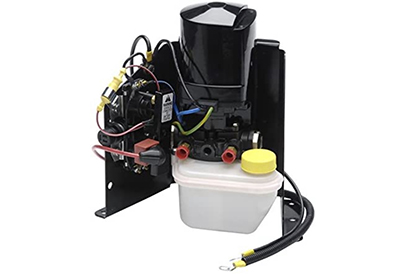 a stern-drive trim pump assembly – usually found in the engine room
a stern-drive trim pump assembly – usually found in the engine room
On a stern drive unit, the system is quite similar, but arranged differently: a hydraulic pump is controlled electrically by the up/down helm switches. Located in the engine compartment, the hydraulic pump pushes fluid through hoses to rams mounted on both sides (port and starboard) of the stern drive unit.
Next time in Part 2, we take a closer look at trim tabs.
 Andrew McDonald is the owner of Lakeside Marine Services – a boat repair/maintenance firm based in Toronto. Andrew has worked in the marine industry for 12 years and is a graduate of the Georgian College ‘Mechanical Techniques – Marine Engine Mechanic’ program.
Andrew McDonald is the owner of Lakeside Marine Services – a boat repair/maintenance firm based in Toronto. Andrew has worked in the marine industry for 12 years and is a graduate of the Georgian College ‘Mechanical Techniques – Marine Engine Mechanic’ program.
Questions or comments for Andrew? Email him directly via: askandrew@lakesidemarineservices.ca


